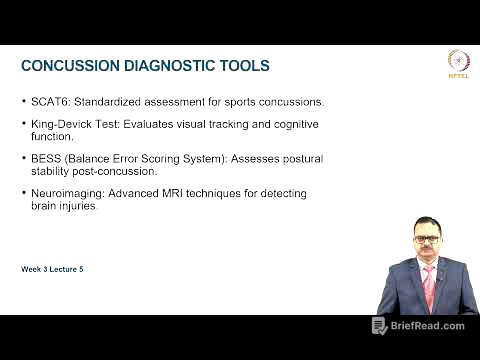TLDR;
This video explains a powerful learning technique that emphasizes understanding over memorization. It introduces a step-by-step method to master any subject by simplifying concepts, teaching them to others, reviewing the material, creatively repeating the information, and embracing errors as learning opportunities. The video underscores that consistent hard work, combined with this method, can unlock one's learning potential and transform the way they approach new subjects.
- Simplify complex concepts into easy-to-understand terms.
- Teach the concepts to identify gaps in understanding.
- Review and refine understanding through repeated simplification.
- Use creative repetition to reinforce learning from multiple angles.
- Embrace errors as opportunities for deeper understanding.
Introduction [0:08]
The video introduces a learning technique that enables mastery of any subject, regardless of perceived intelligence. This method focuses on simplifying complex information to enhance understanding and retention. The technique involves explaining concepts in simple terms, similar to teaching a child, to reveal gaps in one's knowledge. By reorganizing information, the mind can effectively absorb and remember it, turning the learning process into a journey of simplification, connection, and meaning creation.
Simplification: The First Step to Understanding [1:55]
The initial step in mastering a subject is simplification, which involves breaking down a single concept and explaining it in simple terms, as if teaching a seven-year-old. This approach forces the mind to abandon complex language and seek clarity, revealing gaps in understanding. By translating complex ideas into simple terms, the brain builds deeper connections, making the information more accessible and memorable. The video emphasizes that true understanding begins when one can explain something simply, avoiding the illusion of complexity.
Teaching to Learn: The Secret to Solidifying Knowledge [3:42]
Teaching is presented as a method to enhance learning, where explaining concepts out loud, as if to someone unfamiliar with the subject, is crucial. This process forces the brain to organize ideas logically, revealing gaps in understanding. Recognizing these gaps is a pivotal point in learning, as it highlights areas needing further attention. By adopting a child-like approach to teaching, one can activate a natural mechanism for accelerated learning, solidifying knowledge through the act of verbalizing and clarifying ideas.
Review and Simplify Again: Polishing the Stone [5:46]
After simplifying and attempting to teach a concept, the next step involves reviewing the material and simplifying it again. This iterative process transforms information into true knowledge. By revisiting the source material, finding new examples, and using simple language, one can refine their understanding. Each review and simplification reorganizes the mind, solidifying fragile knowledge and fostering genuine comprehension.
Creative Repetition: Playing with Knowledge [7:26]
Creative repetition involves presenting the same idea from different angles to build multiple connections in the brain, reinforcing understanding. This can be achieved by explaining a concept in various ways, such as through diagrams, analogies, or stories. By varying the form while keeping the content consistent, the brain creates new links, enabling the application of knowledge in diverse situations. This playful approach to learning activates pleasure centers in the brain, enhancing memory and enjoyment.
Embracing Error: The Compass to Real Learning [9:05]
Errors are reframed as valuable tools for learning, indicating areas where the mind has not yet built a solid understanding. Instead of viewing mistakes as failures, they should be seen as opportunities to identify and address gaps in knowledge. By adopting a scientific attitude and asking why an error occurred, one can strengthen the connections that were previously weak. Embracing mistakes and pushing the limits of one's mind are essential for true learning.
The Role of Hard Work and Commitment [11:32]
The video emphasizes that hard work is an indispensable component of mastering any subject, despite the effectiveness of the learning method. Consistent effort and discipline are necessary to strain the brain and foster development. The method enhances the efficiency of effort, ensuring that every attempt to explain, correct mistakes, and creatively review builds a solid step toward mastery. Commitment to the process expands the mind, making the impossible feel inevitable.









